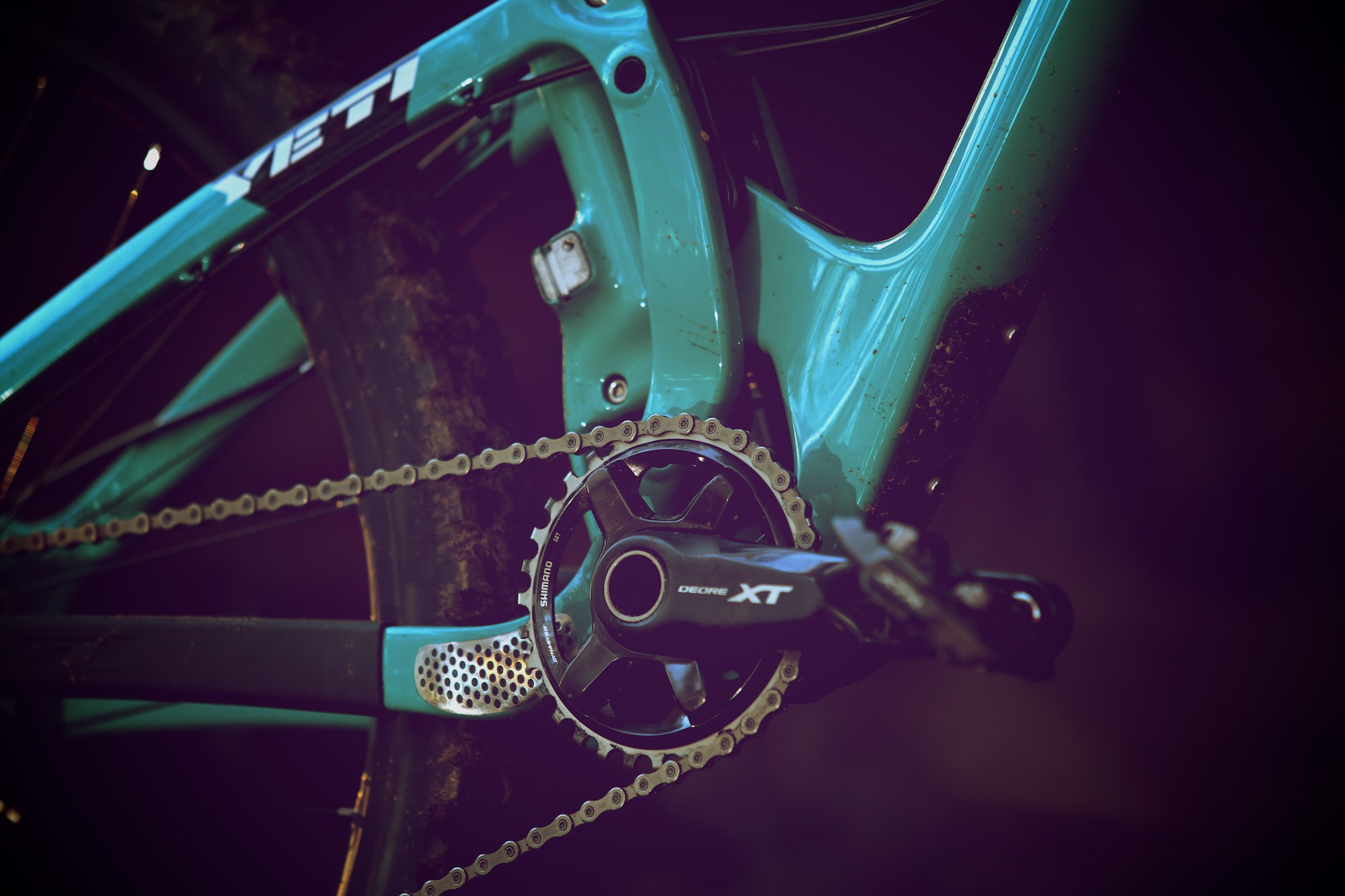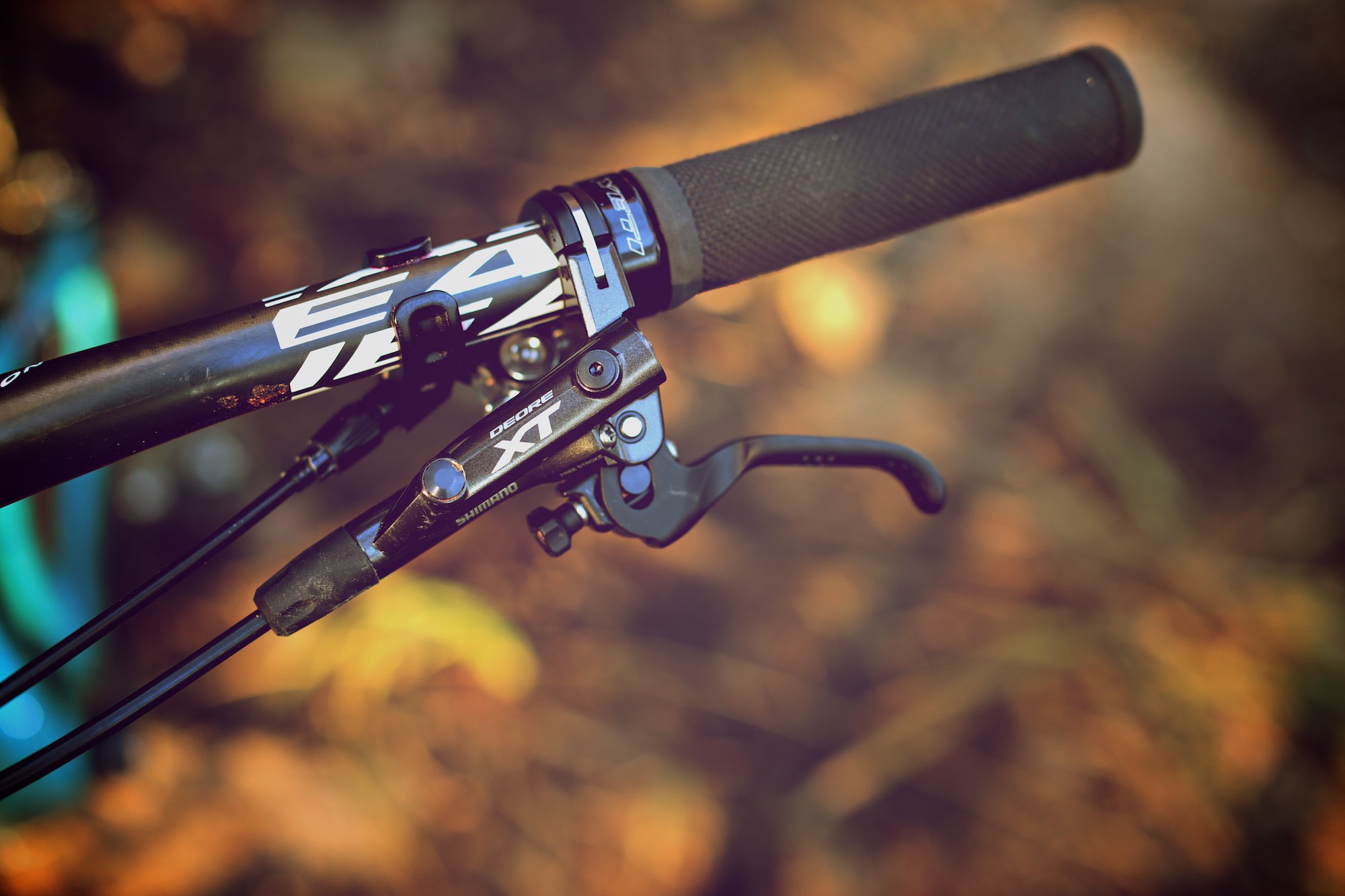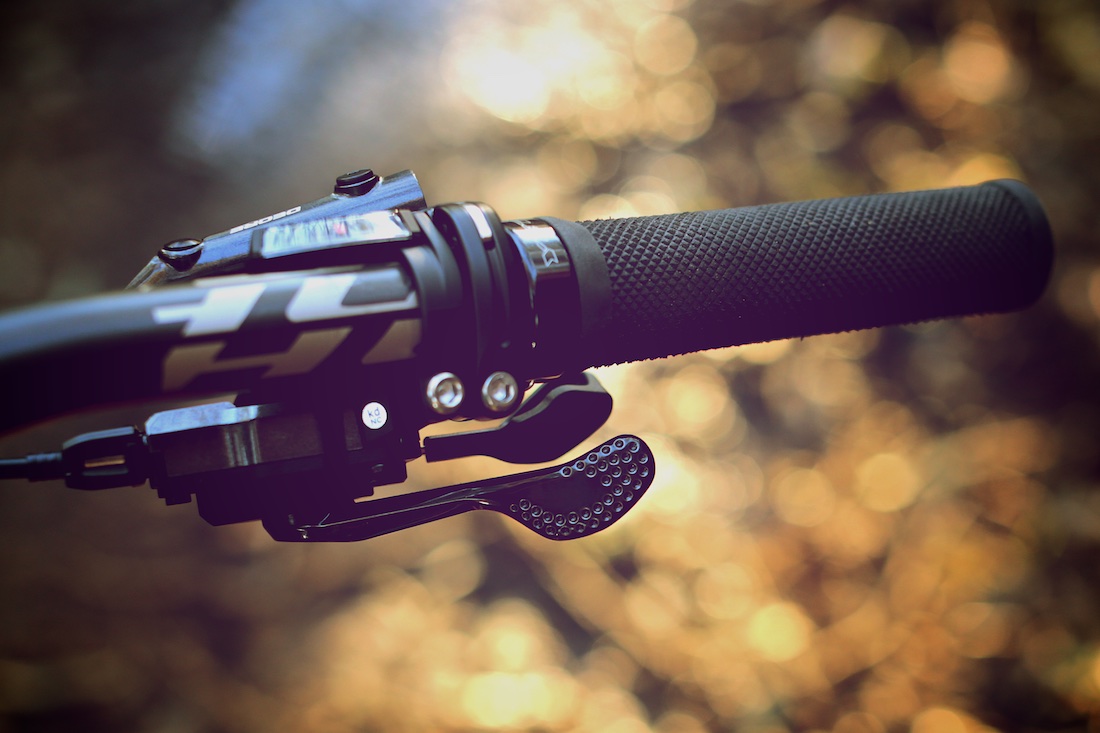The new Shimano XT looks, feels and works so damn nice that it’s hard to believe this isn’t Shimano’s top tier offering.
Shimano’s workhorse component group has gone under the knife in a big way. Front to back, everything has received some love, with the most notable change that it’s now an 11-speed drivetrain. Highlights of 2016 Shimano Deore XT M8000 include:
– 11-42 wider range cassette. Previously only going as low as a 36 tooth sprocket, Shimano’s 11 speed XT now has 11-40 and 11-42 tooth cassette options, giving riders a huge useable range of gears.
– Single, double or triple chain ring options. XT retains a wide range of options for all riders, and is still available a triple and double chainring setup, as well as single-ring options.
– Crisp new shifters. The new shifters look a lot like the premium XTR models and feel lighter and crisper under the thumb than before.
– Derailleurs. More options for the front derailleur (including the new side cable pull version, for bikes with tyre clearance issues) and a sleeker, tougher rear derailleur with an adjustable clutch tension.
– Refined brakes. Dropping a few grams, the new XT brakes also look a lot more like XTR in their shape.
– Pedals. Revised pedals offer more support around the cleat area in both Race and Trail configurations.
For more background info on the new XT, read our first impressions piece here: XT First Impressions.

Riding XT
We’ve had the new 11-speed XT drivetrain fitted to our Yeti SB-5 for a few weeks now. Previously this bike was fitted with a SRAM X01 drivetrain, so we opted to run the nearest XT equivalent, a 1×11 setup with 32-tooth ring. Here are our early impressions.
Drivetrain:
The single-ring drivetrain we fitted was equipped with the 32-tooth DCE (Dynamic Chain Engagement) chainring and the super-wide range Rhythm Step 11-42 tooth cassette out the back. The two big questions that we brought to the this test were: would the 11-42 cassette provide an adequate spread of gears for 1×11 use (especially compared to SRAM’s 10-42 offering)? And would the chain stay on without a chain guide?
The second question is easy to answer. Did the chain drop off the chain ring? No, not once. During our testing we didn’t experience any dropped chains, not even a hint of it. And after a few rides bedding in the system, the chainring and chain were a quiet and smooth duo, gliding along with zero noise or feedback.
Did the chain drop off the chain ring? No, not once.
The SRAM narrow/wide chain ring system has proven to be near flawless – we’ve only dropped chains with narrow/wide rings a handful of times or in muddy conditions – so effective chain retention was always going to be vital in ensuring uptake of Shimano’s 1×11 system. Many other chain ring manufacturers have been jumping aboard with the alternating teeth thickness design (Race Face, Wolftooth and E13 are just a few), Shimano’s take on the single ring design however is very different. The teeth are consistent in shape/width but they are much taller and squarer than on traditional rings. Said to increase chain retension by 150%, the new teeth profile has us convinced.

Even still, the old debate applies: would you run a chain guide for added security and peace of mind? You only need to drop the chain once for it to become a problem… It’s up to you to decide. Thankfully there are many neat, lighter upper guides coming out that do a great job of making sure the chain won’t wander off the teeth when you don’t want it to.

Changing gears with the new shifters is so very precise; they have a much more positive and solid feel to the click, but with such a resounding click does not come increased effort, the action is really very light. In many respects, the new shifters feel like the perfect mix between the solid of Shimano’s beefy gravity group, Saint and the lightness of XTR.
Shimano claim shifting action to be 20% lighter overall, and with a new OPTISLICK coated gear cable, the effort to shift is reflected in the way the derailleur unmistakably selects gears, providing you with a very easy system to use.
Our test kit uses a 32 tooth front chainring and the super-wide 11-42 tooth cassette. We found the range to be highly effective, and at the low range we could ride up steep pinches without wishing for any lower gears. If you’re particularly keen to gear your bike lower or taller, you can opt for a 30 or 34-tooth ring, or of course XT is also available with a double or triple ring. In comparison, SRAM’s single rings are available in a much wider range of sizes (even going as low as a 26-tooth), but the most popular size is a 32-tooth.
As many have noted, SRAM’s XD Driver allows for a wider range cassette than Shimano (10-42 vs 11-42), but in our opinion we never missed the slightly higher gearing at the top end – we think having adequately low climbing gears is much more important than a higher top gear. Admittedly, we aren’t exactly cross country racers, but our thoughts are that if you’re going that fast you’re likely to be on tarmac, so just chill and watch out for cars.
The Rhythm Step cassette comes in two variants: 11-13-15-17-19-21-24-27-31-35-40 (optimal for 2×11 or 3×11 use) and 11-13-15-17-19-21-24-28-32-37-42 (for use with a single front chainring).
Brakes:
It’s safe to say Shimano’s hydraulic brakes are known as being the most reliable and consistent options over the last few years. But no brakes are perfect, and we’ve had our fair share of issues from both the SRAM and Shimano parties – SRAM have often proven inconsistent and requiring frequent bleeding, while some Shimano’s have had weeping piston seals.
Like the rest of the groupset, the XT brakes have had a complete overhaul. Looking more like XTR brakes than ever before, the slim shape and stumpy lever takes up very little space on the bars, and with the I-Spec mounting option, combining the brake and shifter to neaten your cockpit even further is a possibility.
What we look for in a good brake is a consistent lever feel at all times and powerful bite that can be modulated with one finger on the lever. The XT stoppers score top marks in this regard, they feel absolutely fantastic under the finger. In many regards they are on par, if not better feeling, than the more expensive XTR brakes.
The two external adjustments let you decide exactly where you want the lever to sit and how far you want it to pull into the bar before the pads contact, and they work a treat.
These brakes provided perfect modulation and power whilst never feeling grabby, delivering a sweet amount of power consistent with how hard you squeeze the lever.
Shimano place a real emphasis on heat management, using a variety of technologies to ensure heat doesn’t become an issue. A trick aluminium rotor with a steel braking surface makes the most of the best properties of both materials, dissipating heat whilst proving a durable braking surface. We had no chance in heating up these brakes to a significant degree on our usual test grounds around Sydney, but we tried our best with no sign of fade or power loss. Top marks once again.

Verdict:
Shimano had definitely lost some ground to SRAM over the past couple of years as single chain ring drivetrains have become more and more popular, but with the new XT we’re seeing a turning of the tide. Shimano now have an affordable 11-speed option, and with XT’s 11-42 cassette, they can offer a viable 1×11 drivetrain for the masses as an alternative to SRAM. Because XT 11-speed will fit just fine on a standard Shimano freehub body, we also think it’s going to be incredibly popular with riders who’d been holding out on going to 11-speed because they didn’t want to have to purchase a new rear hub/freehub/wheel.
We don’t have any set-in-stone pricing for the new XT drivetrain yet unfortunately, but Shimano have indicated that prices will be within 5% of current XT.
This makes the new 11-speed XT considerably less expensive than SRAM’s X01 drivetrain, which we’d pick as being an equivalent item in terms of placement and performance.
If you’ve been thinking it was about time to give your bike a drivetrain upgrade, or if you’ve sitting on the fence of going for a 1×11 drivetrain, we can highly recommend the new XT group, or if you’re eyeing off a new 2016 bike that is specced with the 11 speed XT, snap it up.


